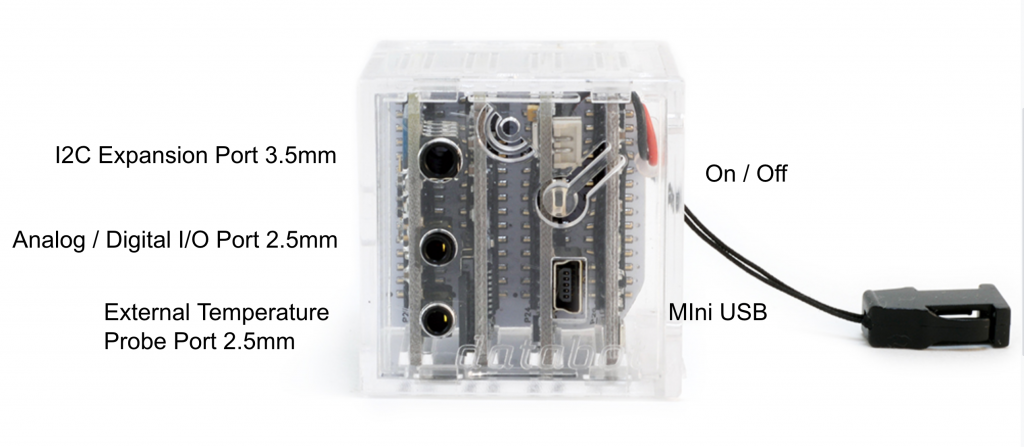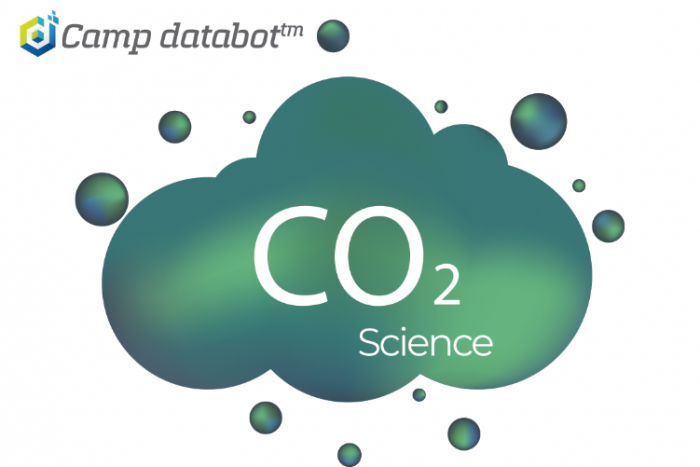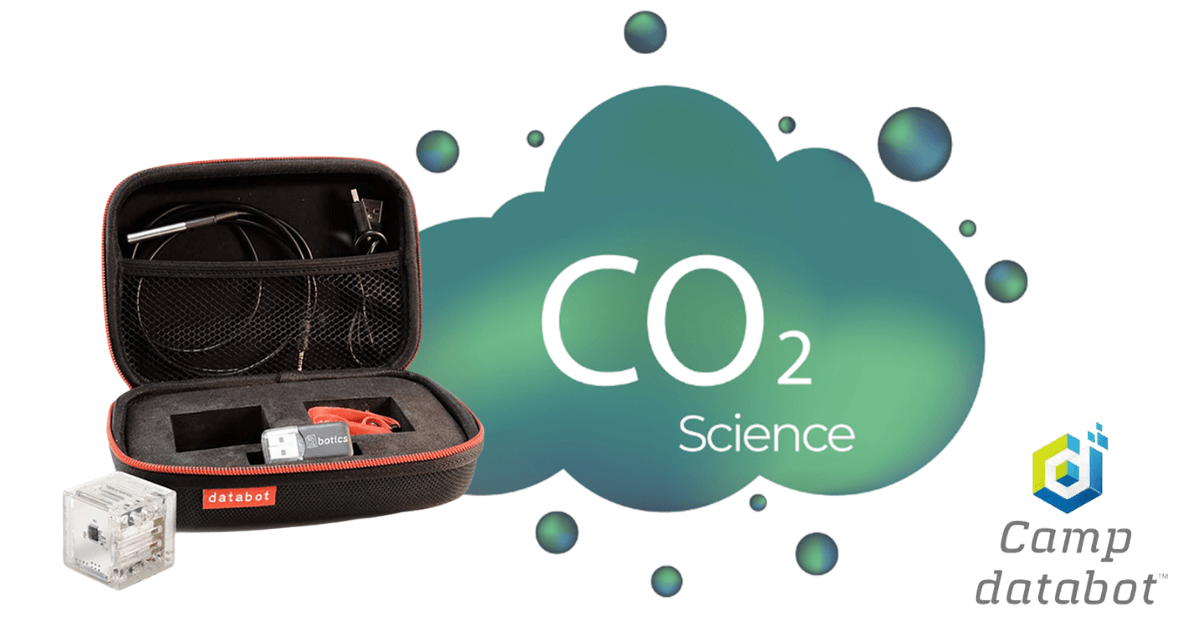You may have seen us promote or heard other educators talking about the databot robot over the last few months. We added it to our main offerings a few months ago and this small, cube-shaped robot is certainly a powerhouse when it comes to STEM education—even in the remote variety. As the name does imply, the databot is constantly looking for and collecting data from its environment. Using various on-board sensors, which include air pressure, altitude, CO2, and humidity sensors, it's totally capable of collecting a whole lot of information pertinent to student science experiments. And, now, there’s a brand-new option for teaching and learning with the databot remotely: the Camp databot CO2 Science Kit!
First, a bit about the CO2 Science Kit. Like we've said, the databot has a CO2 sensor and that technology works extensively as kids complete all the lessons. With remote and hybrid learning in mind, the databot team put this kit together to be conducive to STEAM learning in all sorts of environments, including homes, in the classroom, for virtual learning, and even as part of afterschool programs. So, yes, you could say that the CO2 Science Kit is as versatile as the databot itself.
The CO2 Science Kit is ideal for students in Grades 4-8 and it includes five modules for kids to complete. There are two Chemistry modules (Density of Gases and Chemical Reactions), two Environment modules (Indoor Air Quality and Climate Change), and a Life Science module (Human Respiration). All the different modules allow for greater interdisciplinary exploration of intriguing areas of science. And, each one helps students see how they can use real-time data capture in each of these areas. Activities are all extremely hands-on with exciting endeavors like building a model lung and simulating a cave science mystery!
The idea behind the CO2 Science Kit is creating common threads among each of these areas of science. And, that common thread—connecting multiple areas within Life Science, Earth Science, Chemistry, and Environmental Science—is CO2. Using their new, remote-friendly curriculum, students can see how CO2 provides a link between so many vital pieces of life and study things like air quality, carbon sequestration, and applied mathematics all at home. More specifically, students can focus on learning about things like gas density, chemical reactions, human respiration, indoor air quality, and climate change, which are the highlighted themes of the five modules.
As we said, this curriculum is organized within five modules, which are each comprised of five activities. They also have an overview section, complete with background information, standards alignment guides, and additional resources for educators and students. Those five activities within each module include two short introductory activities followed by a longer experiment. Then, there are two extensions (a challenge and a collaboration activity designed for student groups). The databot team said they put more focus on the first three activities for the purpose of remote learning, but that, if you can put students into groups somehow, the collaborative challenges are quite fun.

Using the databot and the lessons at home, students will find the structure of these activities helpful. The activities are all similar in structure, starting with how educators can set the stage. Background information is available and students have opportunities to do research and discuss it with peers, parents, or teachers. For some modules, kids must hypothesize what is going on in regards to certain mysteries or what results might be. There are also clues that help guide them toward possible solutions.
All activities are demonstrated over video so that children understand the point of the experiment and how to begin. Seeing various examples even really helps them grasp a better understanding of what to do while conducting experiments at home. Then, if possible, student groups are able to reconvene online and report on their findings after trying the experiments. This is a good opportunity for collaborative discussion—even remotely—and educators can repeat the same steps for each module. All activities provide a good balance of inquiry, discussion, and hands-on experimenting while replicating social interaction from the classroom.
The curriculum included with the kit provides teachers with the support they need to lead multi-day STEM experiences. These experiences also help transform how students see the world as they collect, view, and leverage data through interdisciplinary exploration. As they navigate through these Chemistry, Life Science, and Earth Science lessons, students will be using their databot’s CO2 sensor in combination with elements like temperature, humidity, and light to discover the many ways in which we interact with carbon dioxide.

This kit is awesome at getting kids thinking about and recognizing the importance of data and data literacy. With all the data their databot collects and provides to them, that's just one example of how quickly data is gathered, shared, and communicated in the modern world—a world in which it is very important to be able to read, interpret, and communicate data quickly and clearly. Knowing how to analyze data is an important skill and, as citizens of a data-driven world, it’s the responsibility of each of us to become data literate and make informed decisions based on the data that’s available for consumption.
When students explore data-driven activities like these, they're building valuable skills related to collection, visualization, and interpretation of scientific data. These skills are even transferrable to many other types of data whether it's business intelligence, COVID-19 statistics, or the latest data from Mauna Loa Observatory telling us our planetary CO2 levels are continuing to elevate. Whenever students conduct any data-oriented activities such as those in the CO2 series, they're learning to collect and analyze data. And, these are some invaluable skills that they can apply to 21st century careers and also part of the NGSS.
To learn more about the Camp databot CO2 Science Kit and other databot kits, visit our online store. The databot’s are available as single units, in 2-packs, and 10-packs. If you have any questions about teaching and learning with the databot, please reach out to our team. And, follow us on Twitter and Instagram for more databot updates and news from the world of STEM education.
This blog was adapted from a post on the databot website.



